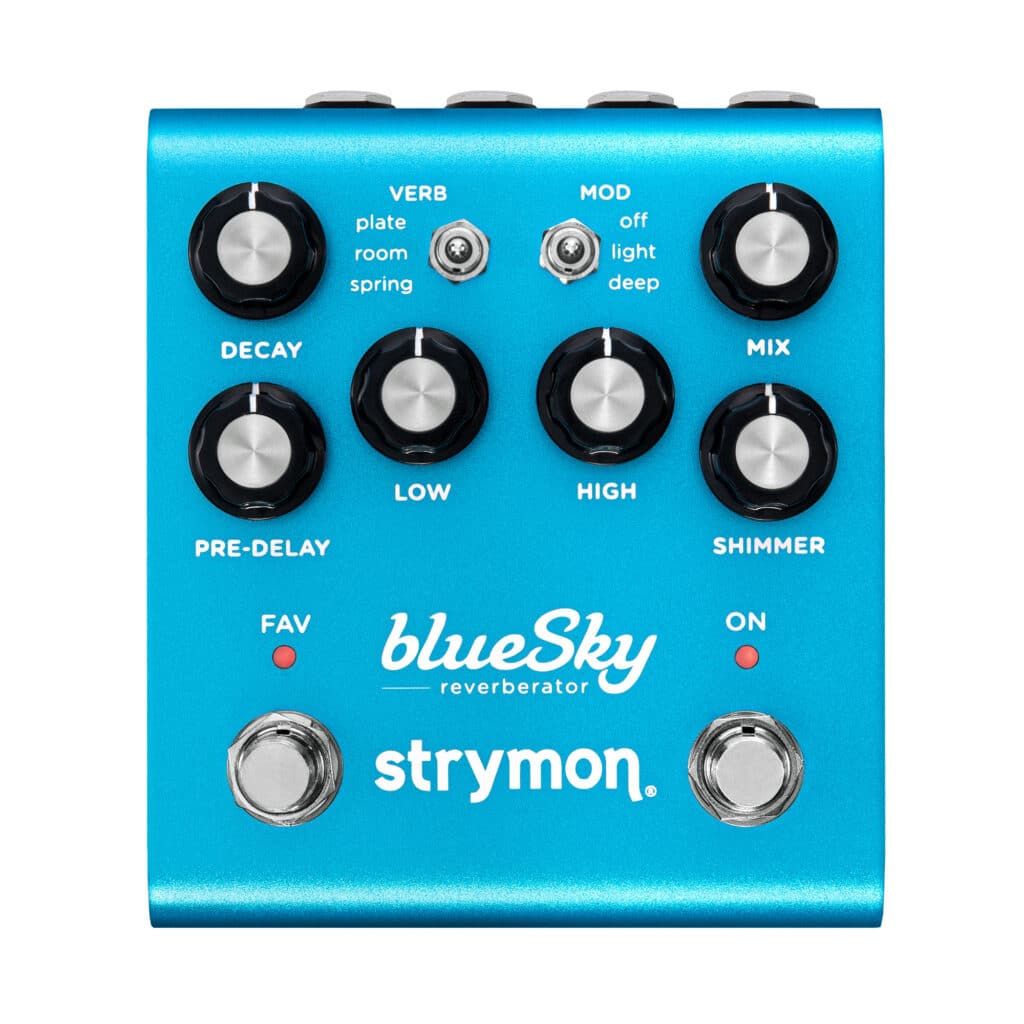Related Tags
How to choose and buy an electric guitar
A beginner’s guide to picking your first electric six-string—what to look out for, what to ignore and everything in-between.
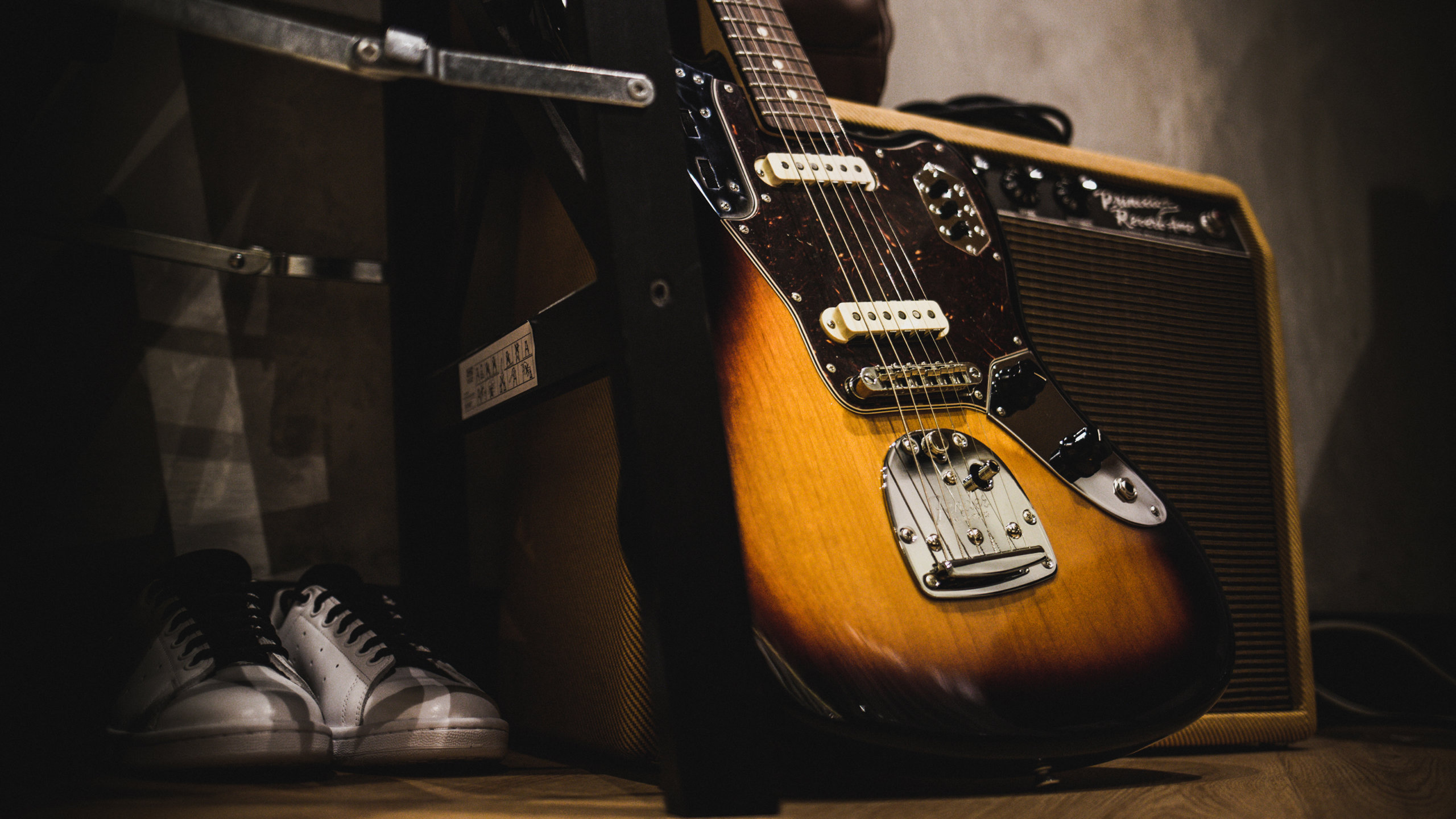
As though the kaleidoscope of guitars at your local music shop isn’t bewildering enough, you have salespeople outmaneuvering you with talk about pickups and woods and brands. But picking out an electric guitar shouldn’t be like going into battle. To keep the experience civil, it helps to understand the basics of the instrument.
We won’t dive into the details of it works—there’s always Wikipedia for that—but we’ll break it down to the broad elements that make one guitar different from another, and why they matter. These are: aesthetics, comfort, sound and cost.
Aesthetics
It’s the first and last thing you’ll notice about any guitar, so why shouldn’t you devote a large part of your purchasing decision to how an instrument looks? There’s no shame in choosing a six-string just because your heroes sling the same one.
Electric guitars come in hundreds of shapes and sizes, yet most of their differences are cosmetic and a question of taste. You should, however, pay attention to the type or style of body—that’s the only visual element that significantly changes the sound of the guitar. In general, there are three types of electric guitar bodies: solid, semi-hollow and fully hollow.
Solid-body guitars

These are the most common guitars around. From Fender Stratocasters to Gibson Les Pauls to Ibanez RGs, the electric guitar is pretty much synonymous with solid-body ones. As these guitar bodies are made from a single hunk of wood, they tend to be heavier and more versatile, and they’re better able to handle loud volumes and effects than their hollow-bodied counterparts. The sustain—that’s the length of time a note rings out after you pluck a string—on these models also go on for longer. If you’re a beginner, solid-bodied guitars are a great place to start.
Fully hollow guitars

Think of these as acoustic guitars that you run through an amplifier. Boxy and vintage-looking, fully hollow guitars offer a cleaner, richer and ‘purer’ sound with lots of bass. That said, they don’t sustain for as long as solid-bodied guitars, and they’ll wail with feedback if you crank the volume up too high. Models such as D’Angelico Excels and Gretsch Falcons are instruments to be tamed and coaxed, so they’re not exactly noob-friendly.
Semi-hollow guitars

As their name suggests, these guitars have a block of wood that runs through the middle of an otherwise hollow body. They tend to be slimmer than their fully hollow cousins, and larger than solid-bodied ones. Tone-wise, models like the Gibson ES-335 and Epiphone Sheraton-II straddle the previous two—they won’t howl for days, but you’ll still be able to play them loud and heavy.
Comfort
While you’ll buy a guitar for its drop-dead gorgeous looks, you’ll stick to it because of how comfortable it is to play. And unless your hands suddenly grow larger or you develop biceps the size of Dwayne Johnson’s, a guitar that’s agonizing to play today will be as painful years later. Get the one your body agrees with. To do that, you’ll want to pay attention to a guitar’s shape, neck, fretboard and weight, the latter of which comes largely from the material used for its body.
Shape
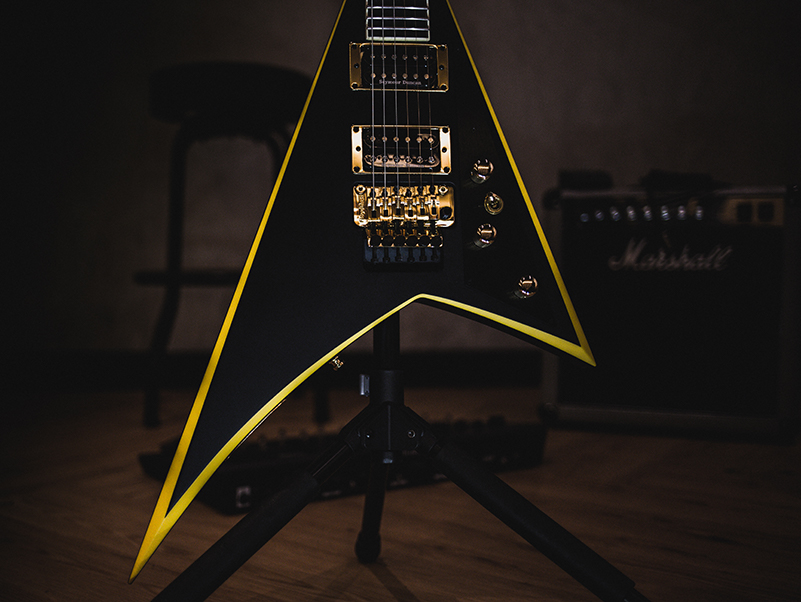
It’s all about common sense here. Don’t shoot for a Flying V if you plan on playing seated most of the time. (Hint: The guitar has to rest on your lap, right?) Opt for a shred-friendly guitar with large cutaways, like an Ibanez RG, if you want to unleash the fookin’ fury. (Pro tip: It’s easier to reach the higher notes.) And, for the love of James Hetfield, don’t buy a Gibson Explorer or an odd-shaped axe unless you’re willing to hunt—and spend—for a case it’ll fit into.
Neck
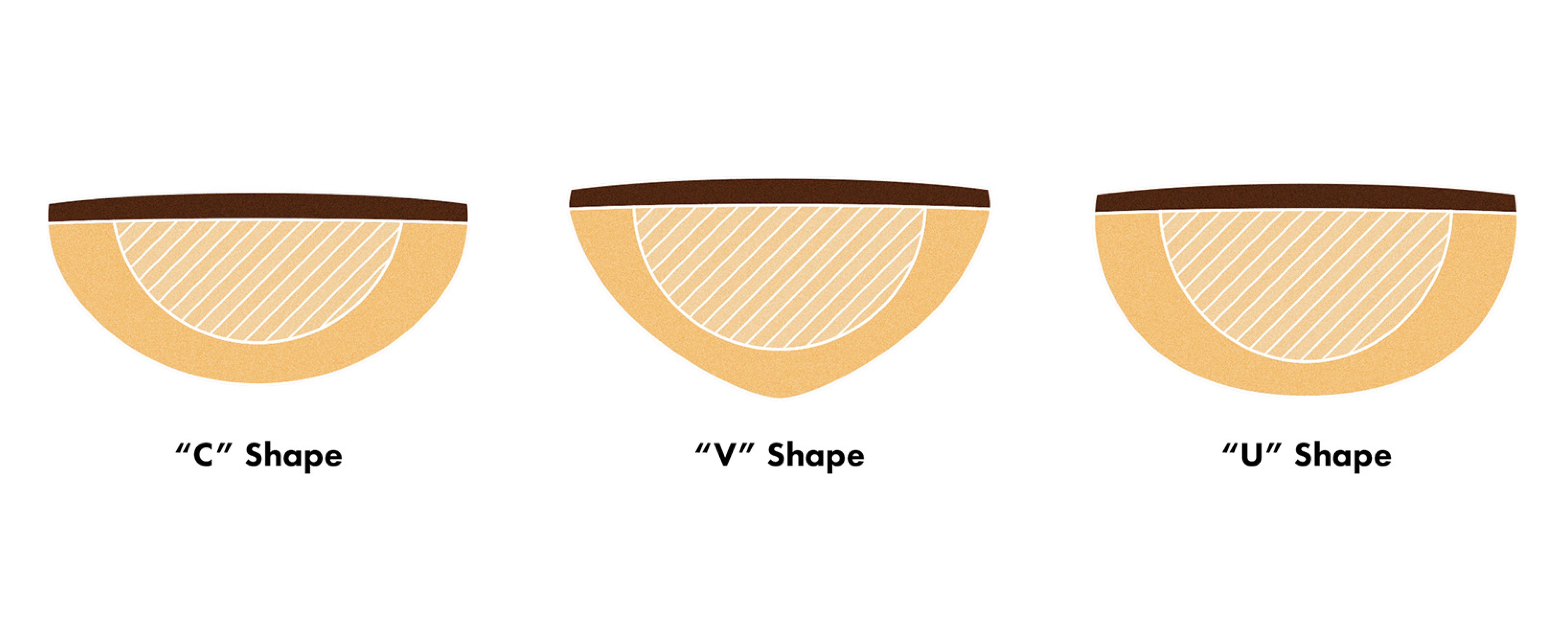
Like our hands, not all guitar necks are created equal. Their depths, widths and cross-section shapes—taken together, they’re called “profiles”—vary between models and manufacturers, and there aren’t any industry standards. It’s natural to imagine slimmer and narrower necks being better for fast players, but not if you’ve hands the size of baseball mitts. The simple advice here is to try as many guitars as possible to find one whose neck your hands and fingers can easily grasp.
Each manufacturer has its method of designing and categorizing necks. Fender divides its necks into three profiles, “C,” “V” and “U”; the shapes of the letters roughly correspond to that of the cross-section. PRS Guitars builds four profiles that run the gamut from wide and thick to narrow and thin, with one even bearing an asymmetrical cross-section. And Gibson and Ibanez, well, have dozens of profiles.
Fretboard radius
It may seem like an insignificant spec, but don’t underestimate how a guitar’s fretboard radius affects its playability. The measurement, typically in inches, denotes the curvature of the fingerboard: The smaller the number, the more rounded the fretboard. And, hand size notwithstanding, rounder fretboards are better for chords while flatter ones are designed for shredding. You can also set the ‘action’ (the distance between the fingerboard and the strings) much lower on a flat fretboard.
Although each brand tends to have their preferred spec, you can group the radii into three broad categories: vintage, flat and ‘balanced.’ You’ll find the former radii on many old or vintage-spec’ed Fender models—these have a 7.25-inch radius, which is extremely curved. Flat fretboards are common to brands such as Ibanez and Jackson; those can be anywhere between 13 to 16 inches. And right in the middle, between nine to 12 inches, are the fingerboards on your modern-day Fenders and Gibsons.
You might also have seen the term “compound radius” thrown about. It means that as you go up the neck closer to the body, the fretboard gets flatter to aid in solos.
Weight
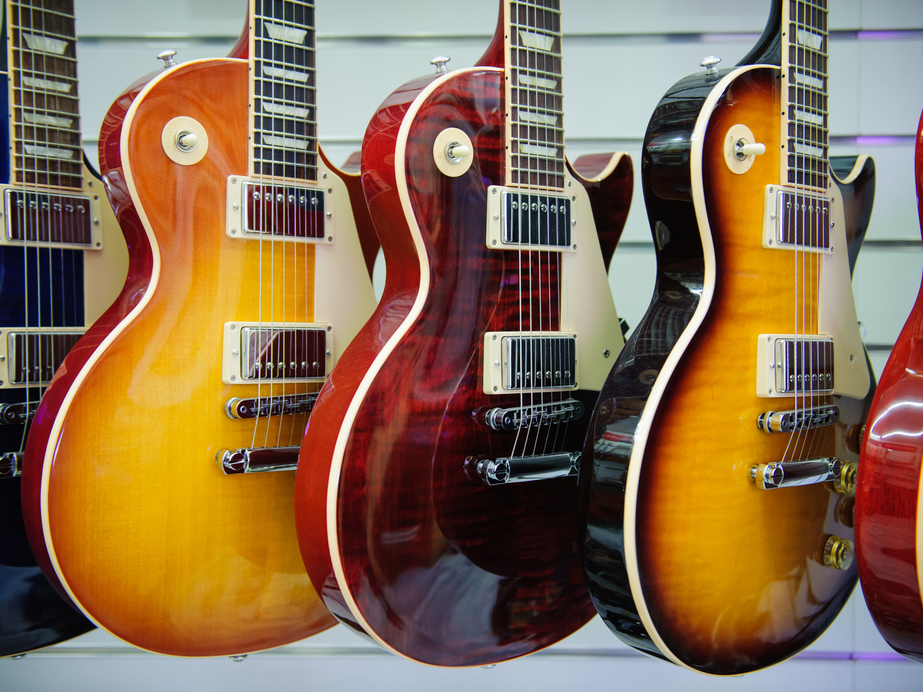
Some people can hear the difference between an electric guitar whose body is made from alder and another made from ash. There are those who can tell apart an ebony from maple fretboard. And some folks swear that a neck carved from mahogany sounds ‘warmer’ than one from any other tree carcass. Don’t be bowled over by the hype.
While the wood—or “tonewood,” in guitar parlance—positively affects the way strings vibrate, the distinctions, for electric guitars at least, are minute at best and psychological at worst. Those starting out with the instrument will probably think everything sounds the same. The weights of the tonewoods, on the other hand, aren’t as arcane. You merely need to hoist a guitar up to find out if it’ll break your back after hours of playing.
Alder, ash and basswood are the lighter of the common tonewoods. You’ll find the first two used in many Fender guitars, while many axes from Ibanez and Jackson use basswood. Poplar and agathis are also light, although not as popular, tonewoods.
Mahogany and maple can weigh a ton. Many guitars—notably Gibson Les Pauls—have a combination of both, with mahogany as the ‘main’ material and maple as a layer on top of it, if only to show off the wood’s beautiful grain. Strap on a Les Paul Custom for a few hours, and you’ll feel those shoulders grunt and grumble.
Sound
Before the salespeople on retail floors and ‘experts’ on Facebook work their charm, know this: It’s easy to tweak the sound of an electric guitar, whether it’s through amplifiers, pedals, electronics, strings… you name it.
So don’t stress out if you love the shape of a Fender Telecaster yet want to shred like Kerry King. Sure, the Fender won’t deliver the Slayer guitarist’s exact tone, but with the right stuff, you can come close. We’ve even seen metalheads put Epiphone Dots—it’s a semi-hollow guitar—through the paces.
That said, there are dozens of elements on a guitar that influence how it sounds. For simplicity’s sake, novices should only pay attention to the pickups and whether the guitar has a vibrato system.
Pickups

These little magnets are the most significant contributor to a guitar’s voice, which means it shouldn’t come as a surprise that there’s an entire universe of pickups out there. Before you fall into that black hole, though, get to grips with the pickups that come stock on a gleaming new guitar—and there are two dominant types: single-coils and humbuckers.
Single-coil pickups are stock on most Fender Stratocasters and Telecasters. They’re named after a single coil of wire that wraps around the pickup’s innards—but we don’t have to go there yet. What you do need to know is that single-coils are typically brighter (in ‘audio’ terms, with more treble), twangier and lower in output than humbuckers, although they’re also noisier.
In comparison, humbuckers are larger, louder and are better at canceling unwanted noise. These pickups, which are stock on Gibson Les Pauls and many Ibanez RGs, deliver a deeper and full-bodied (in ‘audio’ terms, more of the middle frequencies) sound than single-coils.
Pickup configuration
Exotic guitars notwithstanding, there are three spots to drop a pickup on a guitar’s body: at the bridge (closest to the ‘end’ of the body), neck (furthest away) and middle (duh) positions. And since a string vibrates differently across its length, the positions of the pickups are significant in sculpting your sound.
Bridge pickups are commonly thought of as ‘lead’ pickups. As these pickups are under the portion of the string that vibrates the least, they tend to produce a shriller tone that ‘cuts through the mix’ better. Neck pickups, on the other hand, are regarded as ‘rhythm’ pickups for the opposite reason. And middle pickups give you that lush, bright jangle—especially if you’re talking Strat-style instruments.
That’s why you’ll find many guitars with an “HSS” configuration. (The initialism simply refers to a humbucker at the bridge, single-coil in the middle and single-coil at the neck.) Many players work around the perceived ‘thinness’ of the bridge position with a fat, high-output pickup like a humbucker.
And depending on the circuitry of your guitar, you’ll be able to choose which pickups to engage. Your average Strat, for instance, has a five-way switch that allows you to activate: 1) Neck single-coil; 2) Neck and middle single-coil; 3) Middle single-coil; 4) Middle and bridge single-coil; 5) And bridge single-coil. In comparison, Les Pauls have a three-way switch that lets you pick between the neck humbucker, bridge humbucker, and both simultaneously. Don’t worry too much about how pickups are wired, though—this can be easily tweaked.
There are more complex wiring systems, such as split-coils and coil-taps. But you don’t wanna go there just yet.
Vibrato system
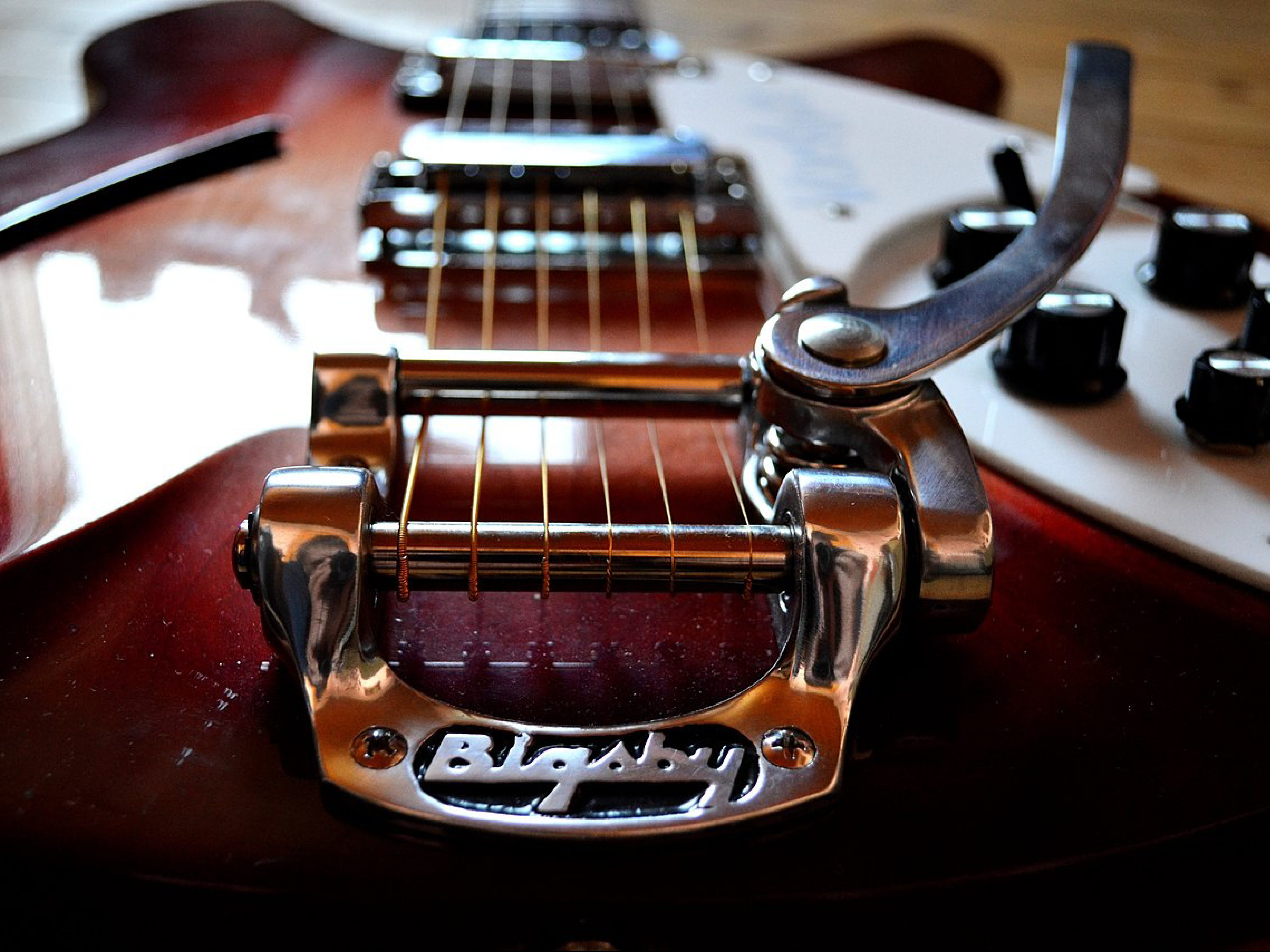
Also known as the “whammy bar” or “tremolo arm,” these are devices affixed to the guitar’s bridge that mechanically raise and lower the strings to change their pitch. You’ve heard it before—legends such as Jimi Hendrix, Eddie Van Halen and Kevin Shields are among its famous users and abusers.
There are, again, dozens of vibrato systems around. But the only question here is: Do you want one? Although you shouldn’t base your purchasing decision on it and you probably won’t be toying with one in the first few weeks of learning the instrument, it is a fun device to have in the long run.
Cost
For many of us who have a master-slave relationship with our bank accounts (we’re the slaves), the overriding factor when settling on an electric guitar is its price tag. Spending within your means is timeless advice, yet the allure of that $3,000 guitar in the window can be irresistible—but resist you should.
If this is your very first axe, you won’t need to cough up more than $600 for a brand new six-string. Anything above that will be subject to the law of diminishing returns, returns you won’t be able to hear or feel. And at the same time, guitars below a hundred bucks will probably leave a lot to be desired, especially in the quality of their construction.
Check out our full, in-depth list of recommended electric guitars for beginners, or read on for a quick summary of sub-$600 axes.
Under $600

Options are aplenty at this range. Fender Standard Telecasters and Stratocasters fall just shy of $600, but the Squier Classic Vibe series is arguably the most value-for-money Strats and Teles around. And while you won’t be able to rock a Gibson Les Paul at this price, the Epiphone Les Paul Standards and Customs look almost identical for a fraction of the cost. Metal and hard rock fans will want to cast their eyes upon the striking body shapes of the Jackson X series.
For semi-hollow and fully hollow instruments, the Gretsch Streamliner and Ibanez Artcore series are proper introductions, as is the classic Epiphone Casino, the guitar popularized by John Lennon.
$200 to $400

At this price, you won’t be able to welcome a new Fender electric into your life, but the Squier Standard models are still very decent facsimiles. And one rung below the Epiphone Les Paul Standards are the 100, Special and Studio models. Like their more expensive brethren, these have solid mahogany bodies, too. Many guitars from the Ibanez RG, Jackson JS and ESP LTD 50 series, staples among metalheads, also belong to this range.
However, apart from the Epiphone Dot and a few models in the Ibanez Artcore series, you don’t have many choices for hollow-bodied guitars.
Under $200
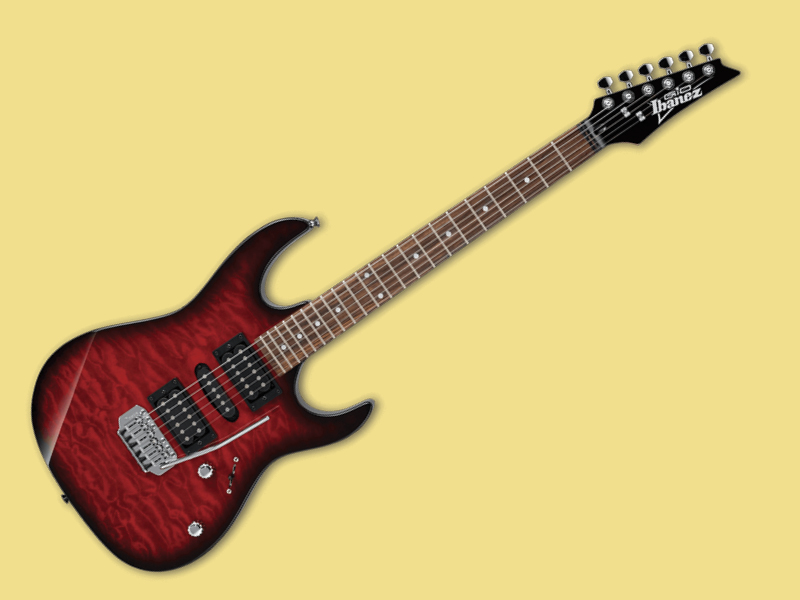
Here’s where the pickings start becoming slim. The Squier Bullet series will set you back about $150, as will the Epiphone Les Paul Junior models—think of these as the newbie’s equivalent of Fender and Gibson, respectively. The Ibanez GIO series is the brand’s most affordable line, while the ESP LTD 10 series is another solid bunch of guitars for the beginner.
If you’re hankering after a hollow-bodied, tough luck—you won’t find one in this budget.
UPDATE (17/4): We’ve included a section on fretboard radii and pickup configuration.

